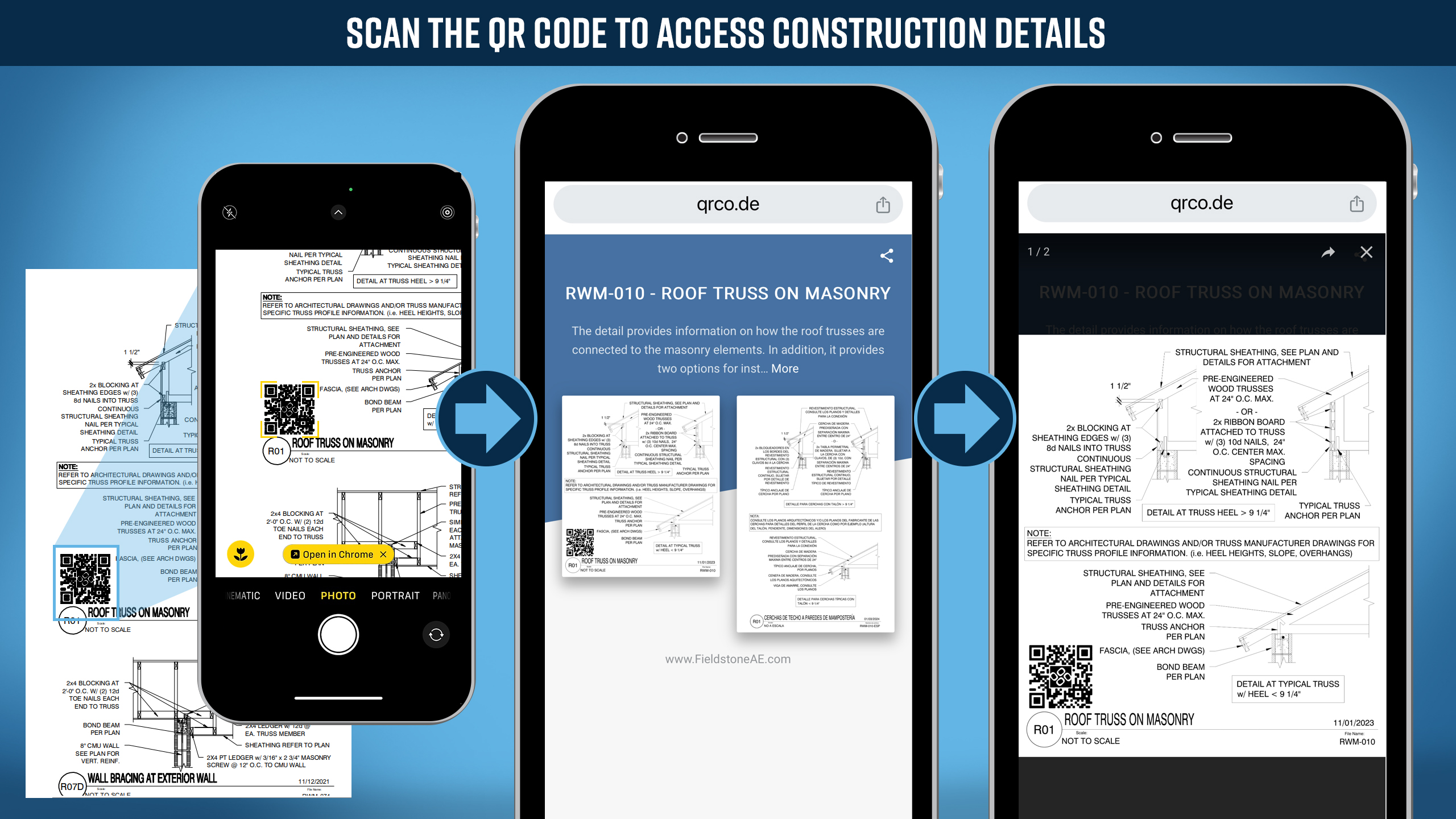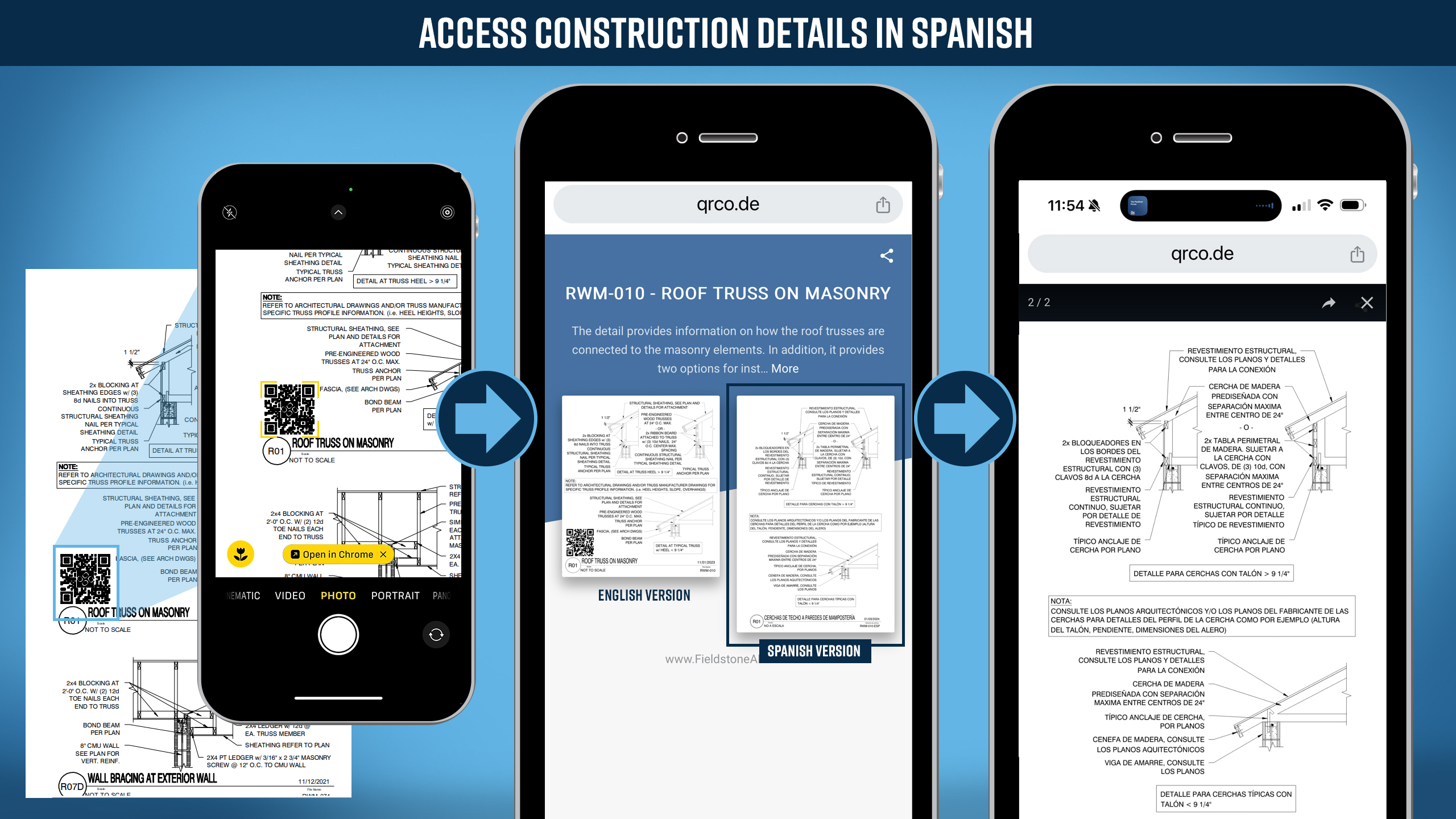At Fieldstone A&E, it has long been our founder, Ryan Rasmussen’s, vision to enhance our design and engineering expertise with technology that can assist the construction efficiency and productivity of those projects in the field. During the Great Recession, we saw many people leave the home building industry, from highly skilled trades to veteran executives. The industry is still feeling the effects of this loss of labor and expertise. In response to this issue, Ryan has said “Construction documents are the primary form of communication for all involved in the construction process. As creators of these documents, it was clear to me that we have an opportunity and responsibility to help.”
In recent years, the prevalence of QR codes for easily accessing information has presented an opportunity to bring this vision to our clients. The QR code gives us the opportunity to attach information such as project detail specifications, step-by-step installation guides, safety protocols, material specification and inspection checklists to our clients directly from our engineering and architectural drawings. By embedding QR codes in our documents, we exponentially increase our ability to provide valuable information to construction teams building our clients’ homes.
Teddy Taylor, our Senior Construction Manager led the initiative to identify pertinent details for inclusion in these QR codes. Reflecting on the development process, Teddy said, “We selectively went through our drawings and found details that we thought would benefit the most from the QR code and then we set up the QR codes to show the construction detail.” Teddy has currently identified the top 100 details, with plans to expand the usage and content accessible with this technology.

At the beginning of this year, Fieldstone A&E began adding these QR codes to our new engineering detail sheets. The QR code on the cover sheet directs clients to our SWAT team contact information which is our dedicated team of engineering and architectural specialists who respond and resolve issues that may arise in the field.

Throughout our drawings, clients will also find QR codes linking them to additional instructions relevant to the specific drawing details. For greater accessibility, these instructions can be accessed in both English and Spanish. In developing the Spanish version our team took special care to ensure accuracy of the translation. This effort involved collaboration with experts in both design and construction to ensure accuracy and clarity. Lorena Corrales-Pepper, Engineer with our SWAT team was part of this initiative and said, “By meticulously translating and simplifying these complex architectural and engineering details, we have created a resource that bridges the gap between design and implementation.”

Recently, the use of QR codes has expanded to our Interior Design department. Interior Design clients will now see a QR code on our Interior Design set cover page that links to the Interior Design presentation showcasing colored elevations, 3D renderings, samples of finishes and other selection details. Sharing the design presentation has proved invaluable to those executing the project in the field. Natasha Ellis, Interior Design Senior Client Manager, had previously thought about including presentation images in the drawing set to achieve this. However, this wasn’t feasible due to the significant increase in file size. Using a QR code to convey this information was the perfect solution. Natasha reflects “The QR codes allow us to share the presentation content in color and provide additional details for design intent.”

Since our founding, Fieldstone A&E has been driven by Ryan’s vision to be a forward-thinking and innovative architecture and engineering firm to our residential production builder clients. We strive to understand and meet our client’s business needs, positioning ourselves not just as a vendor but as a trusted advisor. The integration of QR codes to access construction details showcases this commitment to adding value through innovation and collaboration. Moving forward, we will continue to identify additional ways to use technology to provide our clients with a more robust client experience. Ryan envisions future technology integrations, “As our industry continues to embrace technology, we could see attaching Matterport scans or even augmented reality models of the structure down to complex details.” In the near future, our plans are to incorporate installation videos and truss install documentation, ensuring that our clients have the most comprehensive and accessible resources at their fingertips. With these initiatives, we are excited to lead the industry into a new era of efficiency and high-quality construction.

